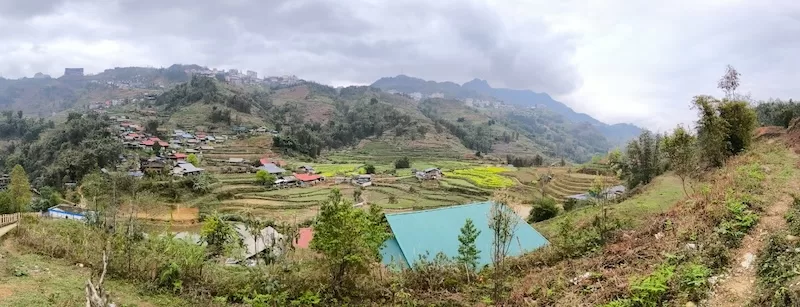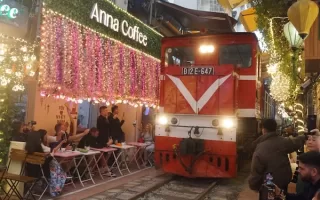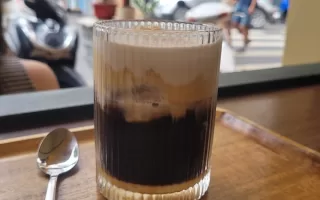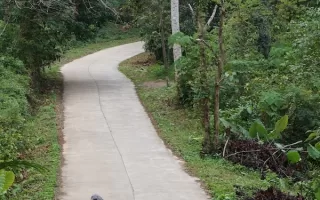If you’ve been following my blog, you know we’re currently traveling through the Far East.
In March, we left Thailand and arrived in Vietnam. Our adventure began in the capital city, Hanoi (check out my Vietnam post!), which also serves as a great launching point for trips in the northern part of the country.
While Saar headed out on the famous Ha Giang Loop, a few days after his return we packed our bags and made our way to Sapa.
🌿 About Sapa
Sapa (SA PA) is a charming mountain town located in northern Vietnam, about a 6–7 hour drive from Hanoi. Nestled in the Hoang Lien Son mountain range near the Chinese border, it’s famous for its breathtaking landscapes.
The area is surrounded by lush rice terraces and picturesque villages inhabited by various ethnic minorities such as the Hmong, who maintain unique traditions and cultures.
Located 1,500 meters above sea level, Sapa enjoys a cool and pleasant climate, refreshingly different from the rest of Vietnam.


When should you visit Sapa?
The best time to visit Sapa is from March to October. You may want to check the weather before your arrival and verify that it is not too cold / rainy or foggy. As mentioned before, Sapa is high in the mountains and that effects the visibility and of course the wethear.
🚌 Getting to Sapa – The Sleeper Bus Experience
One of our most unique travel experiences in Vietnam was our first ride on a sleeper bus—a bus outfitted with individual sleeping pods arranged in two tiers. Each pod comes with a pillow, blanket, personal TV, headphones, and a charging port.
As you board, you’ll be given a bag for your shoes. When you get off, there’s a box with communal slippers, though we skipped that part and stuck with our own shoes 😄.
We booked our seats through HK Buslines. I recommend booking a few days in advance so you can select your departure time and pod (if you’re prone to motion sickness, aim for a lower pod).
We traveled to Sapa at night and returned to Hanoi on a daytime sleeper, perfect for enjoying the views. The ride includes two short breaks for snacks, drinks, and restrooms (bring some money for toilet use, usually, 3000-5000 VND).


🗺️ What to Do in Sapa
🏙️ Explore the Town
Sapa was established during Vietnam’s French colonial period, and you can still spot French-style architecture throughout the town.
Visit the central lake, sit on a bench or grab a seat at one of the lakeside cafés, and enjoy a cup of authentic Vietnamese coffee.
How Long should you spend in Sapa?
I think that 3-5 days would be enough to see most of the views and get the feeling of the town’s wave.
🏞️ Visit Local Villages
Take a trip to nearby villages to witness the everyday life of local tribes. You’ll see people dressed in traditional clothes, working the rice fields, and living in ways that are deeply connected to nature and tradition.
Many families offer homestays, for a small fee, you can visit, dine, and even spend the night in their homes.
At local markets, you’ll find beautiful, handmade souvenirs crafted by villagers.
We visited the Lao Cai villages, about 30 minutes from Sapa by motorbike (we brought our own riding jackets and helmets from home, of course you may ask for a helmet when you rent the scooter ).
The drive itself was scenic, and we made a few photo stops along the way. After parking near the village, we took a peaceful walk through rice terraces and along the river.




Another village we explored was Cat Cat Village, just a short walk from Sapa (around 2 km). There’s a small entrance fee, 120000 VND/Person. While it’s clearly designed for tourists, it still offers authentic charm, natural beauty, and great local food.
We planned to walk back to our hotel, but after a very uphill return route, we gave in and ordered a Grab taxi halfway.






🧭 Guided Village Tours – With a “Mama”
If you prefer not to explore alone, you can join a guided tour with a local “Mama”, a local woman who hosts and guides groups through the villages.
She’ll share insights into the local way of life, cook traditional meals, and even host you for the night.
You can join her for a 1-day or 2-day tour, depending on your preference.
💦 Chasing Waterfalls
We visited the beautiful Love Waterfall, which required a small entrance fee (70000 VND/Person). Along the way, we encountered several carabaos (water buffalos). There were quite a few of them, walking and eating in the huge fields around.
The path was part flat, part steps. Once we reached the waterfall, we stopped to rest and dipped our feet into the cold water. Feeling brave? You can even go for a swim!
After taking what felt like a hundred photos, we crossed the bridge and looped back.
Another waterfall worth visiting: the Silver Waterfall.


🧗 For Adventure Lovers: Trekking Fansipan
Ready for a challenge? You can hike up Mount Fansipan—the highest peak in Vietnam and all of Southeast Asia, standing at 3,140 meters.
Treks are available year-round and require proper gear for the terrain and weather.
The best months for trekking are October-November and March-April.
Tours are organized by various travel agencies and always include a local guide.
🛍️ Shopping in Sapa
If you’re into shopping, Sapa is packed with shops selling sportswear and winter gear: jackets, thermal , clothing, hats, from well-known brands, such as “The North Face”, “Columbia”, “Nike” and many more….
Just like in Hanoi, the items are high-quality knock-offs. Bargaining is totally acceptable, but be polite and respectful while doing so.
Final Thoughts
Sapa surprised us with its natural beauty, cultural richness, and the range of experiences it offers, from quiet lake strolls to village hikes and mountain treks.
Whether you’re looking for adventure or a peaceful escape, this mountain town has something special for everyone.



